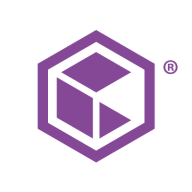

Commvault Cloud and Azure Site Recovery compete in the backup and disaster recovery category. Commvault Cloud seems to have the upper hand due to its extensive data protection and management capabilities across various environments and comprehensive compliance features.
Features: Commvault Cloud offers extensive backup and data protection capabilities across hybrid and multi-cloud environments, focusing on robust security measures and advanced disaster recovery options. Its comprehensive data management and integration support make it ideal for complex infrastructures. Azure Site Recovery is mainly focused on disaster recovery within the Azure ecosystem, highlighting ease of migration and automated synchronization capabilities.
Room for Improvement: Commvault Cloud could improve its user interface consistency across platforms and provide better documentation for smoother onboarding. Pricing models and licensing transparency are needed for better adaptability to organizational needs. Azure Site Recovery could enhance cost predictability and faster, comprehensive support, particularly in scalability and complex recovery scenarios.
Ease of Deployment and Customer Service: Commvault Cloud presents deployment challenges, particularly on-premises, requiring substantial technical expertise. It provides extensive documentation and responsive though inconsistent technical support. Azure Site Recovery has a more straightforward deployment approach, especially in hybrid cloud settings, focusing on integration simplicity. Commvault's customer service excels in certain regions but faces challenges elsewhere due to language and time-zone differences. Azure Site Recovery could improve its multi-region support for consistent service.
Pricing and ROI: Commvault Cloud generally incurs higher costs due to its comprehensive feature set and enterprise focus. Organizations report varied experiences in terms of cost-benefit, with ROI often greater in environments needing extensive data integration. Azure Site Recovery's pricing, driven by usage and cloud resources, can lead to unpredictability but often reflects competitive rates for Azure-centric scenarios. Its ROI is more notable in Azure-centered operations.
Azure Site Recovery, while being pricier than some providers, has a sufficient service level to justify costs.
Azure Site Recovery is time-saving, and its features allow us to automate processes and save resources.
During a global outage that affected our operations, there was no apology or in-depth follow-up from Microsoft.
Microsoft support could be improved as it rates only a five out of ten, with slow response times and a preference for email over phone communication even in severity B cases.
We primarily rely on our Cloud Support Partner for support.
The number of people who know Commvault Cloud is lesser compared to Veeam.
Customer support has very closed departments, requiring us to shuffle between them to get one thing done because representatives have limited accessibility.
Scalability is provided because they are offering 99.95% availability.
I would rate the scalability of Azure Site Recovery as a nine out of ten.
For scalability, it is fine and easy to set up.
The system did go down a couple of times, which impacted our operations.
I would rate the stability of Azure Site Recovery at eight to nine out of ten.
I have not faced any downtimes with Commvault Cloud.
Commvault Cloud is highly stable, and I would rate it a ten out of ten.
If their agent version is mismatched and the health status is critical, you will not be able to perform your Azure Site Recovery.
There is room for improvement in the release of patches, such as ensuring they are properly managed to avoid outages.
The flexibility of Azure Site Recovery regarding integration with different IT environments is limited; it is purely an Azure platform service for business continuity, not meant for integration with other services.
I feel that the support is not yet up to the mark, with not enough professional engineers to provide assistance.
A major advantage is that you do not want to pay any more for huge costs to build a DR site.
It was not the expensive part of our costs.
The pricing of Azure Site Recovery is around a four out of ten, being somewhat cost-effective.
Commvault Cloud is expensive, and there is room for the price to be 10-15 percent lower than what they are charging currently.
Azure provides a 99.99% SLA for their uptime, ensuring that even during outages due to patch releases, there is no data loss, merely hindered accessibility.
In Azure, we can access the services remotely, and we can do DR drills or these other things with minimal cost and resource allocation.
Its time-saving aspects allow us to write PowerShell scripts to automate failover processes.
Other features include endpoint solutions, integration with Office 365, ransomware protection, archival for long-term retention, and no ingress or egress charges.
We can back up unlimited TBs due to our per node license.


Help your business to keep doing business - even during major IT outages. Azure Site Recovery offers ease of deployment, cost effectiveness, and dependability. Deploy replication, failover, and recovery processes through Site Recovery to help keep your applications running during planned and unplanned outages. Site Recovery is a native disaster recovery as a service (DRaaS), and Microsoft been recognized as a leader in DRaaS based on completeness of vision and ability to execute by Gartner in the 2018 Magic Quadrant for Disaster Recovery as a Service.
Commvault Cloud is the ultimate cyber resilience platform built to meet the demands of the hybrid
enterprise. Beyond its core functionality of data backup and recovery across diverse workloads, including applications, databases, virtual machines, and files, Commvault Cloud stands out as a robust defense against ransomware. Going beyond backup, the platform integrates advanced data security features such as encryption, access control, and threat detection, safeguarding against unauthorized access and cyber threats.
With tools for data management, classification, and migration, businesses can optimize storage costs, enhance accessibility, and comply with regulations seamlessly. Boasting cloud integration with major providers like AWS, Azure, and Google Cloud, Commvault Cloud leverages the scalability and flexibility of the cloud for comprehensive data protection and management. The platform's automation capabilities streamline tasks, and its reporting and analytics features provide valuable insights into data usage, potential risks, and optimization strategies. Commvault Cloud is not just a security tool; it is a key component of cyber resilience, enabling organizations to not only protect against cyberattacks but also recover swiftly and minimize the impact of incidents. Elevate your cyber resilience strategy with Commvault Cloud.
We monitor all Disaster Recovery as a Service reviews to prevent fraudulent reviews and keep review quality high. We do not post reviews by company employees or direct competitors. We validate each review for authenticity via cross-reference with LinkedIn, and personal follow-up with the reviewer when necessary.